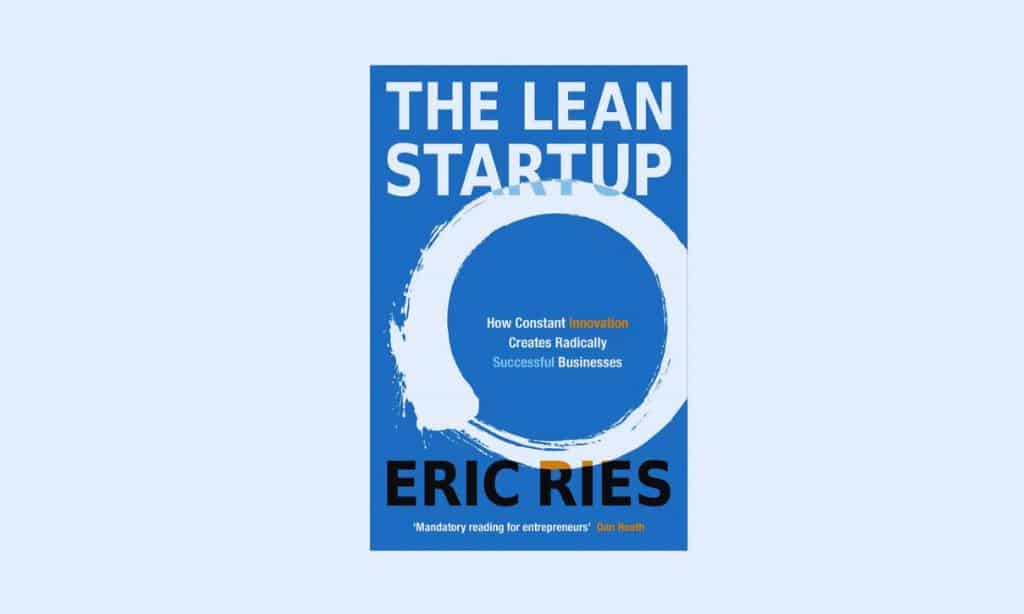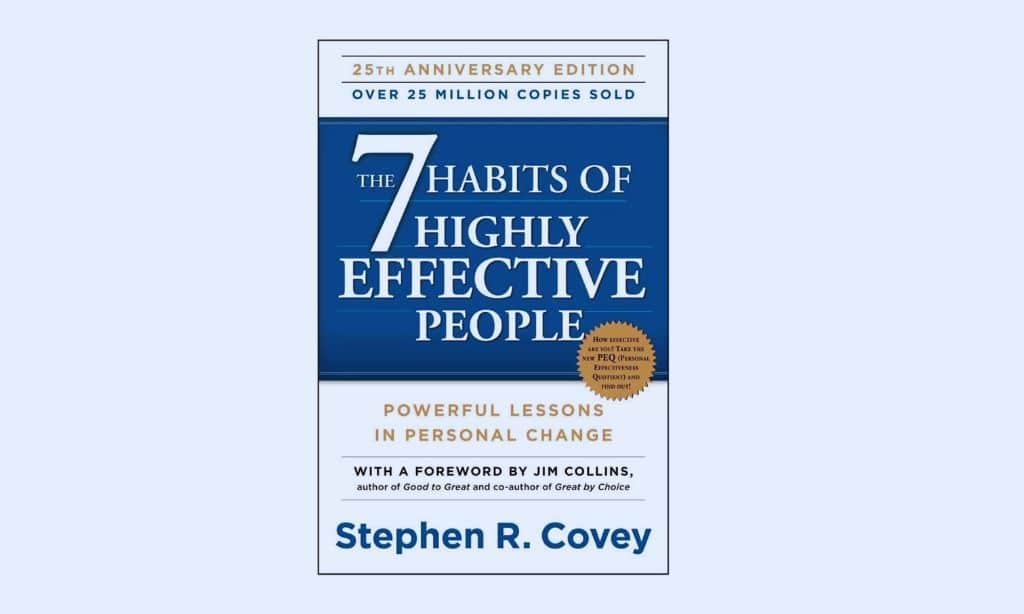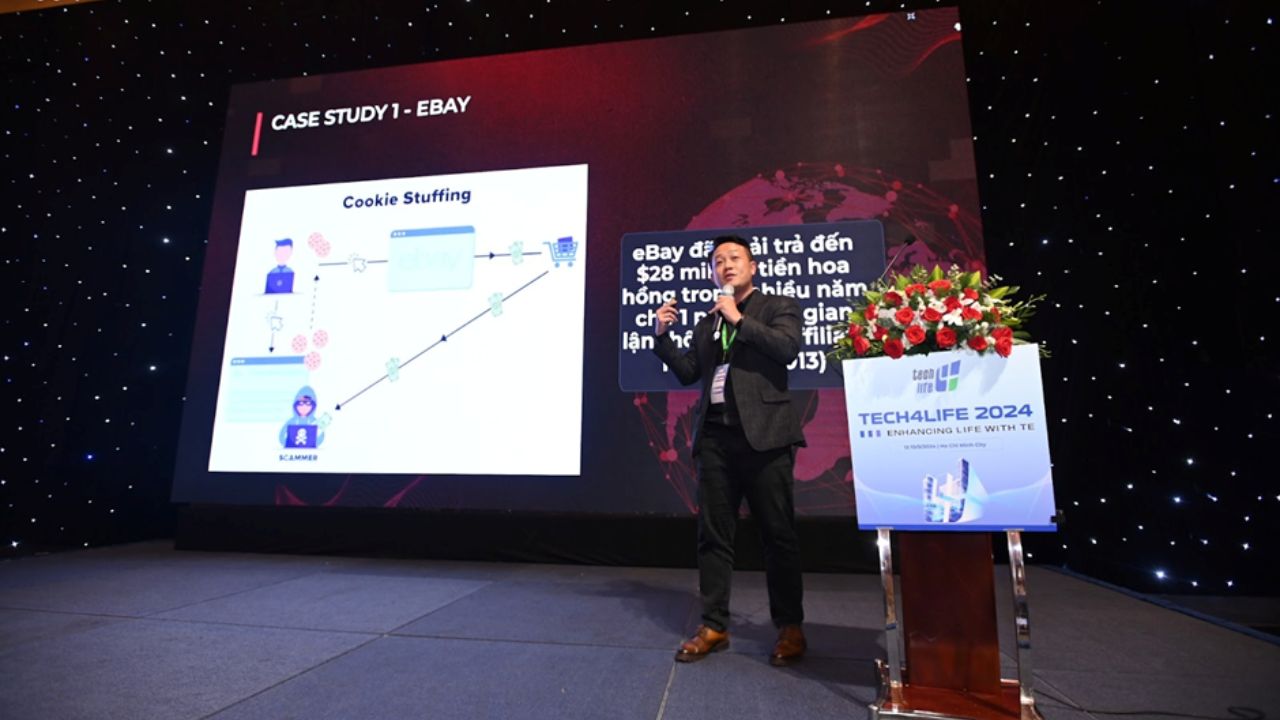In the fast-paced, ever-evolving world of entrepreneurship, knowledge is power. While practical experience is invaluable, the insights gained from those who have already navigated the complex business terrain can provide a crucial edge.
This is where business books come into play, offering a wealth of knowledge, strategies, and inspiration from successful entrepreneurs, industry leaders, and renowned thought leaders.
The journey of an entrepreneur is filled with challenges, from conceptualising a business idea to scaling a successful enterprise.
Each stage requires different skills, mindsets, and approaches. The right books can serve as mentors, offering guidance, sparking innovation, and helping you avoid common pitfalls.
Let’s embark on this literary journey through the minds of some of our time’s most influential business thinkers. Remember, reading these books is just the beginning. The real magic happens when you apply these lessons to your unique business context.
1. “The Lean Startup” by Eric Ries
In the dynamic world of startups, where uncertainty reigns supreme, Eric Ries’s “The Lean Startup” has emerged as a game-changing manifesto.
Published in 2011, this book has revolutionised how entrepreneurs approach building and growing their businesses, particularly in the tech industry.
Key Concepts:
- Build-Measure-Learn Feedback Loop:
The Build-Measure-Learn feedback loop is at the heart of the Lean Startup methodology. This iterative process encourages entrepreneurs to rapidly build a minimum viable product (MVP), measure its effectiveness in the market, and learn from the results. This cycle is then repeated, allowing for continuous improvement and adaptation.
- Minimum Viable Product (MVP):
Ries defines an MVP as the version of a new product that allows a team to collect the maximum amount of validated learning about customers with the least effort. This concept encourages entrepreneurs to get their product into customers’ hands as quickly as possible rather than spending months or years perfecting it in isolation.
- Validated Learning:
This concept emphasises the importance of learning through empirical data gathered from genuine customers. It’s about testing your assumptions and using data to drive decisions rather than relying on intuition or guesswork.
- Innovation Accounting:
This is a quantitative approach to assessing a startup’s progress. It involves setting up milestones, prioritising work, and measuring progress. This method helps startups hold themselves accountable and decide when to pivot or persevere.
- Pivot or Persevere:
A pivot is a structured course correction designed to test a new fundamental hypothesis about the product, strategy, and growth engine. The decision to pivot or persevere should be based on validated learning from customer feedback.
Practical Applications:
- For Tech Startups: The Lean Startup methodology is particularly well-suited for software and tech startups. Use A/B testing to quickly validate new features and leverage analytics to measure user engagement and retention.
- For service-Based Businesses: Apply the MVP concept by offering a basic version of your service to a small group of clients. Use their feedback to refine your offering before scaling.
- For Product-Based Businesses: Instead of spending months developing a full product line, start with one or two core products. Use customer feedback and sales data to inform future product development.
Why It’s Essential for Entrepreneurs:
“The Lean Startup” provides a scientific approach to creating and managing startups, helping entrepreneurs quickly adapt and adjust to market realities. By embracing this methodology, entrepreneurs can:
- Reduce the risk of building products or services that nobody wants
- Save time and resources by focusing on validated learning
- Increase the speed of product development and market responsiveness
- Create a culture of innovation and continuous improvement
The ability to adapt quickly and make data-driven decisions is crucial in today’s fast-paced business environment. “The Lean Startup” equips entrepreneurs with the tools and mindset to do just that, making it an indispensable read for anyone embarking on the entrepreneurial journey.
2. “Zero to One” by Peter Thiel
Peter Thiel, co-founder of PayPal and early investor in Facebook, brings a unique and often contrarian perspective to entrepreneurship in his book “Zero to One.”
Published in 2014, this book challenges conventional wisdom about startups and provides a fresh framework for thinking about innovation and business creation.
Key Concepts:
- Zero to One vs One to N:
Thiel distinguishes between two types of progress: horizontal (one to n) and vertical (zero to one). Horizontal progress involves copying things that work, while vertical progress involves doing something nobody else has done before. Thiel argues that the most valuable businesses create something new – they go from zero to one.
- Monopoly is Good:
Contrary to traditional economic thinking, Thiel argues that creative monopolies benefit society. They drive progress by creating new categories and delivering unique value. He contrasts this with the world of perfect competition, where profits are driven to zero.
- The Power Law:
Thiel emphasises the importance of the power law in venture capital and business. A small number of companies radically outperform all others. This principle should guide business strategy and investment decisions.
- The Importance of Secrets:
Thiel encourages entrepreneurs to look for secrets – important truths that few people agree with you on. These secrets are the foundation of innovative businesses.
- Definite Optimism:
Thiel advocates for a definite optimistic worldview. This means having a specific vision for the future and working towards it rather than being indefinitely optimistic or pessimistic.
Practical Applications:
- For Tech Entrepreneurs: Focus on creating new markets rather than competing in existing ones. Look for opportunities where you can make a monopoly through technological advantages.
- For All Entrepreneurs: Before starting a venture, ask yourself: “What valuable company is nobody building?” This question can guide you towards innovative ideas.
- For Business Strategy: Aim for a monopoly in a small market first, then expand from there. It’s easier to dominate a niche market than to compete in a large, crowded one.
Why It’s Essential for Entrepreneurs:
“Zero to One” challenges entrepreneurs to think bigger and more creatively about the businesses they’re building. It’s essential reading because:
- It encourages bold, innovative thinking rather than incremental improvements
- It provides a framework for identifying precious business opportunities
- It offers a different perspective on competition and market dynamics
- It emphasises the importance of having a clear and ambitious vision for the future
Thiel’s ideas can be precious for entrepreneurs looking to create breakthrough products or services. By encouraging readers to seek out secrets and develop new markets, “Zero to One” can inspire the thinking that leads to genuinely innovative businesses.
3. “Good to Great” by Jim Collins
Jim Collins’s “Good to Great,” published in 2001, is a seminal work in business literature exploring how companies transition from being average to great companies and how long they can sustain that greatness. Based on extensive research spanning five years, Collins and his team studied companies that made the leap from good to excellent results and sustained those results for at least fifteen years.
Key Concepts:
- Level 5 Leadership:
Collins introduces the concept of Level 5 leaders who blend extreme personal humility with intense professional will. These leaders are ambitious for their company’s success rather than their own.
- First Who, Then What:
Great companies focus on getting the right people on the bus (and the wrong people off the bus) before figuring out where to drive it. The who questions come before what decisions.
- Confront the Brutal Facts:
Create a culture where people can be heard and the truth is heard. This involves the Stockdale Paradox: maintain unwavering faith that you can and will prevail in the end, regardless of the difficulties, and confront the most brutal facts of your current reality.
- The Hedgehog Concept:
This operating model reflects an understanding of three intersecting circles: what you can be the best in the world, what you are deeply passionate about, and what drives your economic engine best.
- Culture of Discipline:
When you combine a culture of discipline with an ethic of entrepreneurship, you get magical results. Disciplined people who engage in disciplined thought and take disciplined action are the cornerstone of a great company.
- Technology Accelerators:
Good-to-great companies think differently about technology. They use technology as an accelerator of momentum, not a creator of it.
Practical Applications:
- For Leadership Development: Use the Level 5 Leadership concept to guide training and development programs. Encourage leaders to focus on company success rather than personal glory.
- For Hiring and Team Building: Implement the “First Who, Then What” principle in your hiring process. Focus on getting the right people in your organisation before defining their specific roles.
- For Strategic Planning: Use the Hedgehog Concept to define your company’s core strategy. Regularly review and refine your understanding of what you can be best at, what you’re passionate about, and what drives your economic engine.
Why It’s Essential for Entrepreneurs:
“Good to Great” provides a roadmap for building enduring great companies. It’s essential reading for entrepreneurs because:
- It offers a research-based framework for achieving sustained business success
- It challenges common myths about what it takes to build a great company
- It provides practical concepts that can be applied at various stages of a company’s growth
- It emphasises the importance of discipline and consistent action in achieving greatness
While the book focuses on larger companies transitioning from good to great, the principles apply to startups and small businesses aiming for long-term success. Entrepreneurs can use these concepts to build a strong company foundation, setting them up for sustained growth and success.
4. “The E-Myth Revisited” by Michael E. Gerber
First published in 1986 and revised in 1995, “The E-Myth Revisited: Why Most Small Businesses Don’t Work and What to Do About It” by Michael E. Gerber has become a classic in entrepreneurial literature.
The book addresses a critical misconception – the “Entrepreneurial Myth” or E-Myth – that leads many small businesses to fail.
Key Concepts:
- The Entrepreneurial Myth:
Gerber explains that the E-Myth is the mistaken belief that people who are experts in a particular technical field will naturally be good at running a business in that field. In reality, technical skills and entrepreneurial skills are often very different.
- The Three Personalities: Gerber describes three internal roles that every business owner must balance:
- The Entrepreneur: The visionary and innovator
- The Manager: The pragmatic planner and organiser
- The Technician: The doer and worker
- Working ON Your Business vs. IN Your Business:
One of the book’s central themes is working on your business (strategic planning, systems development) rather than just in your business (day-to-day operations).
- The Turn-Key Revolution:
Gerber advocates for creating businesses that can run independently of the owner. This involves developing systems and processes that allow the company to be “franchised,” even if you don’t intend to franchise it.
- The Business Development Process:
Gerber outlines a process for developing a small business, broken down into three stages: Infancy, Adolescence, and Maturity.
Practical Applications:
- For New Entrepreneurs: Before starting your business, clearly define your roles as the Entrepreneur, Manager, and Technician. Understand that success requires balancing all three, not just excelling in one.
- For Existing Business Owners: Regularly schedule time to work ON your business. This might involve strategic planning, developing systems, or improving processes.
- For Scaling Businesses: Apply the concept of the Turn-Key Revolution by documenting all processes and systems in your business. This makes training new employees more accessible and maintains consistency as you grow.
Why It’s Essential for Entrepreneurs:
“The E-Myth Revisited” is crucial reading for entrepreneurs because:
- It addresses a common reason for small business failure and provides solutions
- It shifts the entrepreneur’s focus from working in the business to working on the business
- It provides a framework for creating scalable, systems-driven businesses
- It helps entrepreneurs balance their roles as visionaries, managers, and technicians.
This book is precious for solo entrepreneurs or small business owners overwhelmed by day-to-day operations. By following Gerber’s advice, entrepreneurs can create businesses that are less dependent on their constant involvement, allowing for growth and, potentially, a better work-life balance.
5. “Start with Why” by Simon Sinek
Simon Sinek’s “Start with Why: How Great Leaders Inspire Everyone to Take Action,” published in 2009, has become a cornerstone text in leadership and business strategy.
Sinek’s central thesis is that the most successful companies and leaders prioritise their purpose (their “Why”) over their products or processes (their “What” or “How”).
Key Concepts:
- The Golden Circle:
Sinek introduces the concept of the Golden Circle, consisting of three concentric circles labelled from the inside out: Why, How, and What. Most organisations know what they do and how they do it, but few can clearly articulate why they do what they do beyond making money.
- Start with Why:
Sinek argues that truly inspiring leaders and organisations start with why they do what they do. This “Why” is the purpose, cause, or belief that drives them.
- The Biology of Decision Making:
Sinek connects his theory to biology, explaining that when we communicate from the inside-out of the Golden Circle, we speak directly to the part of the brain that controls decision-making and behaviour.
- The Split Between Rational and Emotional:
The book explores how people make decisions based on emotions and then justify them with rationality. Understanding this can help leaders communicate more effectively.
- The Celery Test:
This concept helps organisations make decisions that align with their “Why.” If your “Why” is to promote health, you’d choose to sell celery, not Oreo cookies, even if both are profitable.
Practical Applications:
- For Branding and Marketing: Craft your marketing messages starting with your “Why.” This can create a stronger emotional connection with your audience.
- For Leadership: Use your “Why” to inspire and motivate your team. When people understand and believe in the purpose of their work, they’re more engaged and productive.
- For Decision Making: Use the Celery Test when making strategic decisions. Every choice should align with your core purpose.
Why It’s Essential for Entrepreneurs:
“Start with Why” is a crucial read for entrepreneurs for several compelling reasons:
- Clarity of Purpose:
In the chaotic world of startups and small businesses, it’s easy to get lost in day-to-day operations and lose sight of your bigger purpose. Sinek’s book helps entrepreneurs clearly define and articulate their “Why,” which can serve as a north star guiding all business decisions.
- Differentiation in a Crowded Market:
In today’s saturated markets, products and services are often easily replicable—however, a strong “Why” can set your business apart. When you communicate your purpose effectively, you attract customers who share your values, creating a loyal customer base that’s harder for competitors to poach.
- Improved Marketing and Communication:
Understanding and articulating your “Why” can dramatically improve your marketing efforts. It allows you to create emotional connections with your audience, which can be more potent than purely rational appeals. This is especially crucial for startups and new businesses breaking into established markets.
- Enhanced Leadership Skills:
As an entrepreneur, you’re not just running a business but leading a team. Sinek’s insights on how great leaders inspire action can help you motivate your team more effectively, fostering a sense of shared purpose and increased engagement.
- Better Decision Making:
The “Why” serves as a filter for decision-making. When faced with opportunities or challenges, asking, “Does this align with our Why?” can lead to more consistent and strategic choices. This is particularly valuable for entrepreneurs who often face resource constraints and must prioritise effectively.
- Resilience in the Face of Challenges:
Entrepreneurship has ups and downs. A clear sense of purpose can motivate one to persist when facing obstacles. When times get tough, reconnecting with your “Why” can reignite your passion and drive.
- Attraction of Like-Minded Talent:
As your business grows, attracting the right talent becomes crucial. When you communicate your “Why,” you’re more likely to attract employees who are aligned with your mission; this cultural fit can lead to higher employee satisfaction and retention.
- Long-term Vision:
Sinek’s approach encourages thinking beyond immediate profits to consider the lasting impact of your business. This long-term perspective can guide sustainable growth strategies and help build a company that stands the test of time.
- Customer Loyalty:
When customers buy into your “Why,” they’re not just buying a product or service but buying into a belief. This can create more robust, more lasting customer relationships, which are vital for the long-term success of any business.
- Adaptability:
Markets and technologies change rapidly, but a strong “Why” remains constant. This core purpose can guide adaptations to your “What” and “How” as needed, allowing your business to evolve while staying true to its essence.
Practical Implementation for Entrepreneurs:
- Define Your Why: Clearly articulate why your business exists beyond making money. What change do you want to see in the world? What problem are you passionate about solving?
- Align Your Team: Share your “Why” with your team and discuss how to embody it in your work. This can increase engagement and ensure everyone is moving in the same direction.
- Infuse Your Why into Your Brand: Ensure your “Why” is reflected in all aspects of your brand, from your logo and website to your customer service approach.
- Use Your Why in Pitches: When seeking funding or partnerships, lead with your “Why.” It can make your pitch more compelling and memorable.
- Regular Why Check-ins: Schedule regular sessions to review your activities and ensure they align with your “Why.” This can help prevent mission drift as your business grows.
By internalising the lessons from “Start with Why,” entrepreneurs can build businesses that succeed financially and make a meaningful impact.
It encourages a purpose-driven approach to entrepreneurship that can lead to more fulfilling and sustainable success.
6. “Thinking, Fast and Slow” by Daniel Kahneman
Nobel Prize-winning psychologist Daniel Kahneman’s “Thinking, Fast and Slow,” published in 2011, is a groundbreaking work that delves into the dual systems of thinking that drive the way we make decisions.
While not strictly a business book, its insights into human cognition and decision-making are invaluable for entrepreneurs navigating the complex business world.
Key Concepts:
- System 1 and System 2:
Kahneman introduces two systems of thinking:
- System 1: Fast, intuitive, and emotional
- System 2: Slower, more deliberative, and more logical
- Cognitive Biases:
The book explores various cognitive biases that affect our judgment and decision-making, including:
- Anchoring Effect: The tendency to rely too heavily on the first piece of information offered
- Availability Heuristic: Judging the probability of an event based on how easily examples come to mind
- Loss Aversion: The tendency to prefer avoiding losses over acquiring equivalent gains
- Prospect Theory:
This theory, developed by Kahneman and Amos Tversky, describes how people make risk and probability decisions.
- The Illusion of Understanding:
Kahneman discusses how we construct coherent stories to explain past events, leading to an illusion of understanding and predictability.
- The Planning Fallacy:
Describes our tendency to underestimate future actions’ time, costs, and risks while overestimating the benefits.
Practical Applications for Entrepreneurs:
- Decision Making: Understanding the interplay between System 1 and System 2 can help entrepreneurs make more balanced decisions. For critical business decisions, engage System 2 thinking by slowing down and considering multiple perspectives.
- Risk Assessment: Awareness of cognitive biases can improve risk assessment. For example, understanding loss aversion can help frame business propositions more effectively.
- Product Pricing: Knowledge of anchoring can inform pricing strategies. The first price a customer sees can significantly influence their perception of value.
- Project Planning: Understanding the planning fallacy can lead to more realistic project timelines and budgets. Always add buffer time and resources to your estimates.
- Marketing and Sales: Insights into how people make decisions can inform marketing strategies and sales techniques. For instance, framing options regarding potential losses rather than gains can be more motivating for some decisions.
Why It’s Essential for Entrepreneurs:
“Thinking, Fast and Slow” is crucial reading for entrepreneurs for several reasons:
- Improved Decision-Making:
Understanding the mechanisms behind our thoughts and decisions can lead to more rational and adequate decision-making in business contexts.
- Better Risk Management:
Awareness of cognitive biases allows entrepreneurs to assess and manage venture risks more accurately.
- Enhanced Problem-Solving:
By recognising the limitations of intuitive thinking (System 1), entrepreneurs can approach complex problems more systematically.
- More Effective Leadership:
Understanding how people think and make decisions can improve communication, negotiation, and team management skills.
- Realistic Planning:
Recognising the planning fallacy can lead to more accurate project timelines and resource allocation, which is crucial for startup success.
- Improved Customer Understanding:
Insights into human cognition can inform product development, marketing strategies, and customer experience design.
- Self-Awareness:
The book encourages self-reflection, helping entrepreneurs recognise their biases and thought patterns.
- Strategic Thinking:
Understanding cognitive biases can provide a competitive advantage in negotiations, partnerships, and strategic planning.
Practical Implementation for Entrepreneurs:
- Decision Journal: Keep a journal of important decisions, including their reasoning. Review these periodically to identify patterns and improve your decision-making process.
- Pre-Mortem Analysis: Before starting a project, imagine it has failed and work backwards to determine potential causes. This can help identify risks that intuition might miss.
- Diverse Perspectives: Actively seek out diverse viewpoints when making important decisions to counteract individual biases.
- Checklists: Develop checklists for recurring decisions or processes to consistently ensure System 2 thinking is engaged.
- Deliberate Pause: Intentionally pause and engage System 2 thinking before making significant decisions. Ask yourself, “Am I being influenced by cognitive biases here?”
- Data-Driven Decisions: Base decisions on data rather than intuition alone. This can help counteract many cognitive biases.
By internalising the lessons from “Thinking, Fast and Slow,” entrepreneurs can develop a more nuanced understanding of human cognition, leading to better decision-making, more effective strategies, and, ultimately, more successful businesses.
The book’s insights can be applied across all aspects of entrepreneurship, from product development and marketing to team management and strategic planning.
7. “The 7 Habits of Highly Effective People” by Stephen Covey
First published in 1989, “The 7 Habits of Highly Effective People” by Stephen Covey has become a landmark personal and professional development book. Its principles-centered approach provides a holistic framework for personal and interpersonal effectiveness, which has proven invaluable for individuals from all walks of life, including entrepreneurs.
Key Concepts:
Covey organises the seven habits into a framework that moves from dependence through independence to interdependence:
- Be Proactive:
This habit is about taking responsibility for your life. Proactive people focus their time and energy on things they can control instead of reacting to or worrying about conditions over which they have little or no control.
- Begin with the End in Mind:
This habit is based on the principle that all things are created twice – first mentally, then physically. You can work and plan by envisioning what you want in the future.
- Put First Things First:
This habit is about prioritising and doing the most important things first. Covey introduces a time-management matrix to help prioritise tasks based on importance and urgency.
- Think Win-Win:
This habit is based on the principle that we can seek mutual benefit in interactions. We can build better relationships and achieve better results by aiming for solutions where everyone wins.
- Seek First to Understand, Then to Be Understood:
This habit is about communication. We can improve our communication and relationships by truly listening to understand others before trying to get our point across.
- Synergize:
This habit is about creative cooperation and teamwork. It’s based on the principle that the whole is greater than the sum of its parts.
- Sharpen the Saw:
This final habit is about continuous physical, spiritual, mental, and social/emotional improvement.
Practical Applications for Entrepreneurs:
- Be Proactive: As an entrepreneur, focus on what you can influence rather than worrying about factors beyond your control. This could mean focusing on improving your product rather than lamenting market conditions.
- Begin with the End in Mind: Develop a clear vision for your business. What does success look like? Use this vision to guide your decision-making and strategy.
- Put First Things First: Use Covey’s time management matrix to prioritise tasks. Focus on important but not urgent activities that will drive your business forward, like strategic planning and relationship building.
- Think Win-Win: In negotiations with suppliers, partners, or customers, look for solutions that benefit all parties. This approach can lead to more robust, more sustainable business relationships.
- Seek First to Understand, Then to Be Understood: Practice active listening with your team, customers, and stakeholders. This can lead to better product development, improved customer satisfaction, and more effective teamwork.
- Synergize: Foster a collaborative environment in your team. Encourage diverse viewpoints and creative problem-solving to drive innovation in your business.
- Sharpen the Saw: Invest in your development and your team. This could involve continuous learning, maintaining work-life balance, and fostering a culture of growth in your organisation.
Why It’s Essential for Entrepreneurs:
“The 7 Habits of Highly Effective People” is crucial reading for entrepreneurs for several reasons:
- Personal Effectiveness:
The habits provide a framework for personal growth and effectiveness, which is crucial for entrepreneurs who often wear many hats in their businesses.
- Leadership Development:
The principles in the book form a solid foundation for effective leadership, helping entrepreneurs build and lead strong teams.
- Strategic Thinking:
Habits like “Begin with the End in Mind” and “Put First Things First” encourage long-term strategic thinking, essential for business success.
- Relationship Building:
Emphasising empathetic listening and win-win thinking can help entrepreneurs build better relationships with team members, customers, and partners.
- Time Management:
The book provides practical tools for managing time and priorities, which is crucial for entrepreneurs juggling multiple responsibilities.
- Problem-Solving:
The synergistic approach to problem-solving can help entrepreneurs tackle complex business challenges more effectively.
- Resilience:
The proactive mindset the book encourages can help entrepreneurs stay resilient in the face of setbacks and challenges.
- Holistic Success:
By emphasising balance and continuous improvement, the book encourages entrepreneurs to strive for success in all areas of life, not just business.
Practical Implementation for Entrepreneurs:
- Personal Mission Statement: Develop a personal mission statement that aligns with your business goals. Use this to guide your decision-making and prioritisation.
- Weekly Planning: Implement a weekly planning session where you review your goals and plan your week according to your priorities.
- Active Listening Exercise: In your next team meeting or customer interaction, practice listening to understand rather than to respond. Take notes and paraphrase to ensure you’ve understood correctly.
- Win-Win Negotiations: Consider solutions that benefit all parties in your next business negotiation. This might involve creative thinking and compromise.
- Team Synergy: Set up brainstorming sessions that encourage diverse viewpoints. Create an environment where team members feel safe to share innovative ideas.
- Continuous Learning: Set aside weekly time for learning and development. This could involve reading industry publications, taking online courses, or attending workshops.
- Habit Tracking: Use a habit-tracking app or journal to monitor your implementation of the seven habits. Reflect on your progress regularly and adjust as needed.
By internalising and implementing the 7 Habits, entrepreneurs can develop a principle-centred approach to their personal lives and businesses.
This can lead to more effective leadership, better decision-making, stronger relationships, and a more prosperous and fulfilling entrepreneurial journey.
The timeless principles in “The 7 Habits of Highly Effective People” provide a solid foundation for personal and professional growth that can serve entrepreneurs well at any stage of their journey.
Whether you’re just starting or leading an established company, these habits can help you navigate challenges, seize opportunities, and achieve sustainable success.
8. “The Hard Thing About Hard Things” by Ben Horowitz
Published in 2014, “The Hard Thing About Hard Things: Building a Business When There Are No Easy Answers” by Ben Horowitz offers a raw and realistic look at the challenges of running a startup.
Drawing from his experiences as a successful entrepreneur and venture capitalist, Horowitz provides practical wisdom for navigating the most challenging problems business leaders face—those for which there are no easy solutions or ready-made playbooks.
Key Concepts:
- The Struggle:
Horowitz introduces the concept of “The Struggle,” the period in an entrepreneur’s journey filled with doubt, uncertainty, and difficult decisions. He emphasises that this is a normal part of building a company.
- Peacetime vs. Wartime CEO:
Horowitz distinguishes between “Peacetime” CEOs who optimise existing opportunities and “Wartime” CEOs who fend off existential threats. He argues that the best CEOs can switch between these modes as circumstances require.
- The Right Way to Lay People Off:
Horowitz provides detailed advice on handling layoffs, emphasising the importance of clarity, decisiveness, and respecting people.
- Taking Care of People:
The book stresses the importance of caring for employees, even in tough times. This includes being a good workplace and providing honest, straightforward feedback.
- The Importance of Training:
Horowitz argues that comprehensive training is crucial for scaling a company and maintaining quality as you grow.
- Making the Hard Decisions:
The book offers guidance on making difficult decisions, such as whether to sell the company, when to pivot and how to deal with poor executive performance.
Practical Applications for Entrepreneurs:
- Embracing “The Struggle”: Recognize that periods of intense difficulty are regular in entrepreneurship. Use Horowitz’s advice to maintain your sanity and effectiveness during these times.
- Adapting Leadership Style: Learn to switch between “Peacetime” and “Wartime” CEO modes as your business environment changes. This flexibility can be crucial for long-term success.
- Building Company Culture: Use Horowitz’s insights to build a strong company culture that can withstand difficult times. This includes fostering open communication and setting clear expectations.
- Making Tough Personnel Decisions: Apply Horowitz’s guidance when faced with difficult personnel decisions, such as layoffs or firing executives. His emphasis on clarity and respect can help maintain morale even in challenging situations.
- Implementing Training Programs: Develop comprehensive training programs for your employees, recognising this as a critical factor in scaling your business successfully.
- Managing Your Psychology: Use Horowitz’s anecdotes and advice to better manage your psychology as a leader, especially during challenging times.
Why It’s Essential for Entrepreneurs:
“The Hard Thing About Hard Things” is crucial reading for entrepreneurs for several reasons:
- Realistic Portrayal of Entrepreneurship:
Unlike many business books focusing on success stories, Horowitz provides a gritty, realistic look at the challenges of running a startup. This can help entrepreneurs prepare mentally for the difficulties ahead.
- Practical Advice for Crisis Situations:
The book offers concrete advice for handling some of the most challenging situations entrepreneurs face, such as layoffs, pivots, and potential bankruptcy.
- Leadership in Tough Times:
Horowitz provides valuable insights on how to lead effectively during periods of extreme stress and uncertainty.
- Building Resilience:
By sharing his struggles and how he overcame them, Horowitz helps entrepreneurs build the resilience needed to persevere through difficult times.
- Scaling Insights:
The book offers valuable advice on how to scale a company, including insights on hiring, training, and managing executives.
- Decision-Making Framework:
Horowitz provides frameworks for making difficult decisions, which can be invaluable when entrepreneurs face situations without clear answers.
- Cultural Insights:
The book emphasises the importance of company culture and provides practical advice on how to build and maintain a strong culture.
- Psychological Preparation:
By discussing the psychological toll of entrepreneurship openly, the book helps prepare entrepreneurs for the mental challenges they face.
Practical Implementation for Entrepreneurs:
- Crisis Planning: Develop a crisis management plan for your business, considering Horowitz’s advice on handling difficult situations.
- Leadership Journal: Keep a journal of your leadership challenges and decisions. Regularly review this, comparing your experiences with the insights from the book.
- Culture Statement: Develop a clear culture statement for your company, incorporating Horowitz’s insights on building strong company cultures.
- Training Program: Implement a comprehensive training program for new hires, recognising its importance in scaling your business effectively.
- Feedback System: Establish a system for providing regular, honest employee feedback at all levels of your organisation.
- Mentor Network: Build a network of mentors or advisors who can provide support and guidance during your “Struggle.”
- Scenario Planning: Regularly engage in scenario planning exercises, preparing mentally and strategically for potential crises or pivots your business might face.
By internalising the lessons from “The Hard Thing About Hard Things,” entrepreneurs can better prepare themselves for the inevitable challenges of building and running a business.
Horowitz’s candid approach and practical advice provide a valuable reality check and toolkit for navigating the most challenging aspects of entrepreneurship.
This book is precious for entrepreneurs beyond the initial startup phase and grappling with growth and scale challenges. However, its leadership, decision-making, and resilience insights are relevant to entrepreneurs at all stages of their journey.
9. “Influence: The Psychology of Persuasion” by Robert Cialdini
First published in 1984 and revised several times since, “Influence: The Psychology of Persuasion” by Dr. Robert Cialdini has become a cornerstone text in marketing, sales, and psychology.
Drawing on extensive research and real-world examples, Cialdini outlines six universal principles of influence that drive human behaviour and decision-making.
Key Concepts:
Cialdini identifies six fundamental principles of influence:
- Reciprocity:
People tend to return a favour, making them more likely to respond positively to a request if they’ve received something first.
- Commitment and Consistency:
Once people choose or take a stand, they encounter personal and interpersonal pressures to behave consistently with that commitment.
- Social Proof:
People look to the actions and behaviours of others to determine their own, especially in ambiguous situations.
- Liking:
People are more likely to be influenced by those they like. Factors that increase liking include similarity, cooperation, and compliments.
- Authority:
People respect authority and are more likely to comply with requests made by those perceived as authoritative.
- Scarcity:
People value and desire things more when they are less available. Opportunities seem more valuable when they are limited.
Practical Applications for Entrepreneurs:
- Reciprocity in Customer Relations: Offer value to potential customers before asking for a sale. This could be free content, a trial period, or exceptional customer service.
- Commitment in Product Development: Use small, initial customer commitments (like signing up for a newsletter) to lead to more extensive commitments (like purchasing a product).
- Social Proof in Marketing: Leverage testimonials, user reviews, and case studies to showcase how others use and benefit from your product or service.
- Liking in Networking: Build genuine connections with potential partners, investors, and customers. Find common ground and look for opportunities to cooperate.
- Authority in Branding: Establish your brand as an authority in your field through thought leadership content, speaking engagements, or partnerships with respected institutions.
- Scarcity in Sales: Create a sense of scarcity or urgency around your offerings, such as limited-time offers or exclusive features for early adopters.
Why It’s Essential for Entrepreneurs:
“Influence: The Psychology of Persuasion” is crucial reading for entrepreneurs for several reasons:
- Enhanced Marketing and Sales:
Understanding these principles can dramatically improve marketing strategies and sales techniques, helping entrepreneurs reach and convert their target audience more effectively.
- Improved Negotiation Skills:
The principles of influence can be applied in negotiations with suppliers, partners, and investors, potentially leading to more favourable outcomes.
- Better Customer Relations:
By understanding what drives human behaviour, entrepreneurs can create more satisfying customer experiences, leading to increased loyalty and word-of-mouth marketing.
- Ethical Persuasion:
Cialdini emphasises the ethical application of these principles, helping entrepreneurs influence others responsibly and build trust in their brand.
- Product Development Insights:
Understanding how people make decisions can inform product development, leading to offerings that better resonate with target customers.
- Team Leadership:
The principles of influence can be applied within an organisation to motivate teams, encourage collaboration, and drive performance.
- Investor Relations:
Understanding these principles can help entrepreneurs pitch to and persuade potential investors more effectively when seeking funding.
- Competitive Advantage:
In a crowded marketplace, the ability to ethically influence customers, partners, and team members can provide a significant competitive edge.
Practical Implementation for Entrepreneurs:
- Reciprocity Marketing Campaign: Design a marketing campaign that offers genuine value to potential customers before asking for a sale. This could be a free e-book, a helpful tool, or valuable content.
- Commitment Funnel: Create a sales funnel that starts with small, easy commitments (like downloading a free guide) and gradually leads to more extensive commitments (like purchasing a product).
- Social Proof Audit: Review your website and marketing materials. Ensure you effectively showcase testimonials, case studies, and user statistics to provide social proof.
- Liking Strategy: Develop a strategy to increase likability in your brand. This might involve showcasing the people behind your company, finding common ground with your audience, or engaging in cooperative ventures with other respected brands.
- Authority Building: Create a content strategy that positions your brand as an authority in your field. This could include writing a book, starting a podcast, or contributing to respected industry publications.
- Scarcity Tactics: Ethically incorporate scarcity into your offerings. This could be through limited-time discounts, exclusive features for early adopters, or limited production runs.
- Ethical Check: Regularly review your use of these principles to ensure you apply them ethically. The goal should be to highlight genuine value, not to manipulate.
- Team Training: Conduct a workshop with your team on these principles. Discuss how they can be ethically applied in various aspects of your business.
By internalising and ethically applying the principles from “Influence: The Psychology of Persuasion,” entrepreneurs can significantly enhance their ability to communicate, persuade, and build relationships.
This can lead to more effective marketing, stronger partnerships, better team dynamics, and a more successful business.
It’s important to note that Cialdini emphasises the ethical application of these principles. The goal is not to manipulate but to understand human psychology and use that understanding to communicate more effectively and create win-win situations.
10. “The Innovator’s Dilemma” by Clayton Christensen
Published in 1997, “The Innovator’s Dilemma: When New Technologies Cause Great Firms to Fail” by Clayton Christensen has become a classic in the field of business strategy and innovation.
Christensen, a Harvard Business School professor, introduces the concept of disruptive innovation and explores why successful, well-managed companies can fail in the face of specific markets and technological changes.
Key Concepts:
- Disruptive Innovation:
This is the core concept of the book. Disruptive innovations initially underperform along dimensions important to mainstream customers but offer other features that a few fringe customers value. Over time, they improve to the point where they meet the needs of mainstream customers, often at a lower cost.
- Sustaining vs. Disruptive Technologies:
Sustaining technologies improve product performance along dimensions historically valued by customers. Disruptive technologies bring to market a very different value proposition.
- The Innovator’s Dilemma:
This refers to the dilemma that successful companies face: the management practices that have allowed them to become industry leaders also make it extremely difficult to develop the disruptive technologies that ultimately steal away their markets.
- Value Networks:
Christensen introduces the concept of value networks – the context within which a firm identifies and responds to customers’ needs, solves problems, procures input, reacts to competitors, and strives for profit.
- The Role of Resource Allocation:
The book highlights how resource allocation processes in established firms are designed to support sustaining technologies and often inadvertently starve potentially disruptive innovations of resources.
Practical Applications for Entrepreneurs:
- Identifying Disruptive Opportunities: Learn to spot potentially disruptive innovations that might be overlooked or undervalued by established players in the market.
- Creating Separate Units for Disruptive Innovation: If leading an established company, consider creating separate organisational units to pursue potentially disruptive innovations.
- Market Entry Strategy: For startups, consider entering markets unattractive to established players to gain a foothold and improve your product without direct competition.
- Resource Allocation: Be mindful of how resources are allocated in your organisation. Ensure that potentially disruptive projects aren’t starved of resources due to low initial returns.
- Customer Listening: Be careful not to overlook emerging customer needs by focusing solely on your current customers. Look for unserved or underserved segments.
Why It’s Essential for Entrepreneurs:
“The Innovator’s Dilemma” is crucial reading for entrepreneurs for several reasons:
- Understanding Market Dynamics:
It provides a framework for understanding how markets evolve and why established players often fail to adapt.
- Spotting Opportunities:
It helps entrepreneurs identify disruptive innovations that larger companies might overlook.
- Strategic Planning:
The book offers valuable insights for long-term strategic planning, especially in technology-driven industries.
- Avoiding Complacency:
It warns against becoming too comfortable with current success and emphasises the need for continuous innovation.
- Resource Allocation:
Highlights the importance of thoughtful resource allocation, especially regarding potentially disruptive projects.
- Market Entry Strategies:
For startups, it provides insights into how to enter markets dominated by established players.
- Organisational Structure:
It offers guidance on structuring organisations to foster sustaining and disruptive innovations.
- Customer Insights:
The book emphasises the importance of looking beyond current main customers to identify future market trends.
Practical Implementation for Entrepreneurs:
- Disruptive Innovation Audit: Regularly assess your industry for potentially disruptive innovations. Look for products or services that might be simpler, cheaper, or more convenient than current offerings.
- Future Customer Mapping: Identify potential future customers whose needs are not currently met by your industry’s mainstream products.
- Resource Allocation Review: Analyze how resources are being allocated in your organisation. Ensure that a portion of resources is dedicated to exploring potentially disruptive innovations.
- Separate Innovation Units: If leading an established company, consider creating an individual unit or team to explore potentially disruptive innovations.
- Small Market Entry: For startups, look for small markets unattractive to established players but could be a starting point for a potentially disruptive product.
- Technology Trajectory Mapping: Map out the trajectory of technological improvement in your industry and compare it to customer needs. Look for gaps that could represent opportunities.
- Value Network Analysis: Analyze your company’s value network. Are there assumptions or practices that might close your eyes to disruptive threats or opportunities?
- Scenario Planning: Engage in regular scenario planning exercises, considering how potentially disruptive innovations could impact your industry.
By internalising the lessons from “The Innovator’s Dilemma,” entrepreneurs can develop a more nuanced understanding of innovation and market dynamics.
This can lead to more robust long-term strategies, better identification of opportunities, and increased resilience in the face of disruptive changes.
The book is precious for entrepreneurs in technology-driven industries, but its insights apply across various sectors. In today’s fast-changing business environment, understanding the dynamics of disruptive innovation is crucial for any entrepreneur looking to build a lasting enterprise.
Takeaways
These ten essential business books offer invaluable insights for entrepreneurs at every stage, covering leadership, innovation, strategy, and personal growth. From Eric Ries’s “The Lean Startup” on building adaptable businesses to Robert Cialdini’s “Influence” on mastering persuasion, each book provides practical wisdom directly applicable to entrepreneurial challenges.
They emphasise resilience, ethical leadership, and continuous learning—crucial traits for success. Reading these books allows entrepreneurs to navigate business complexities, adapt to change, and lead purposefully.
The key is to read and apply these principles to your unique business context, driving long-term success and impactful growth.












































